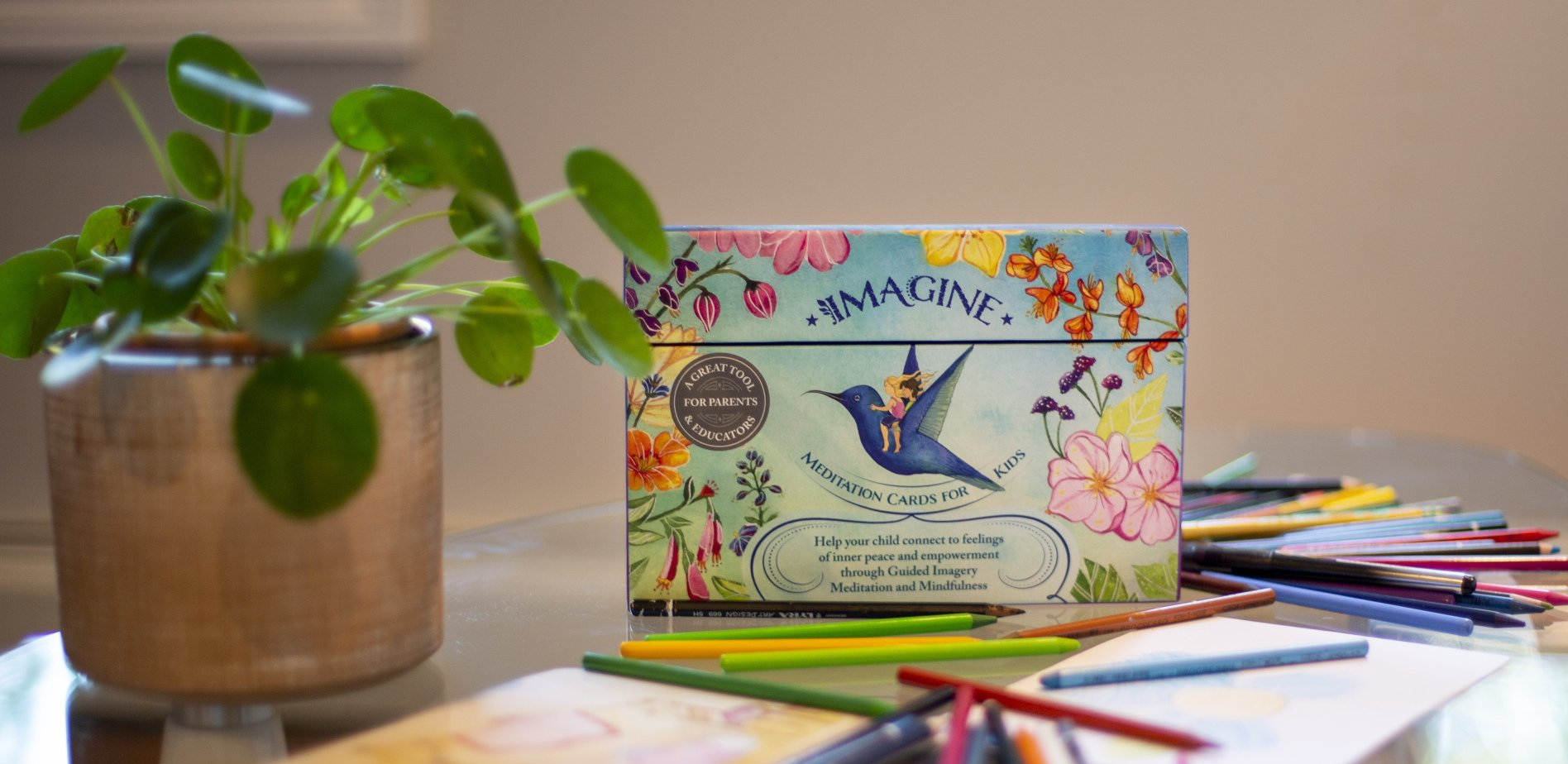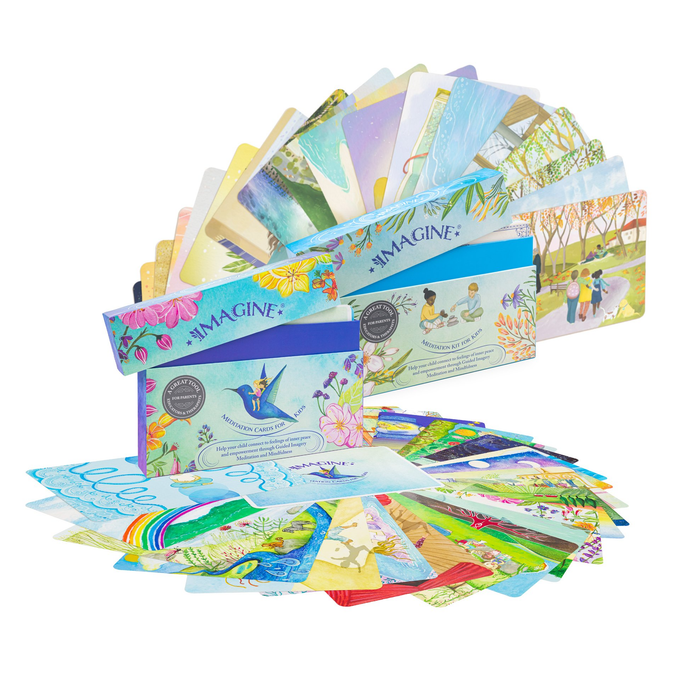IMAGINE. Meditation Made for Kids.
The Cards
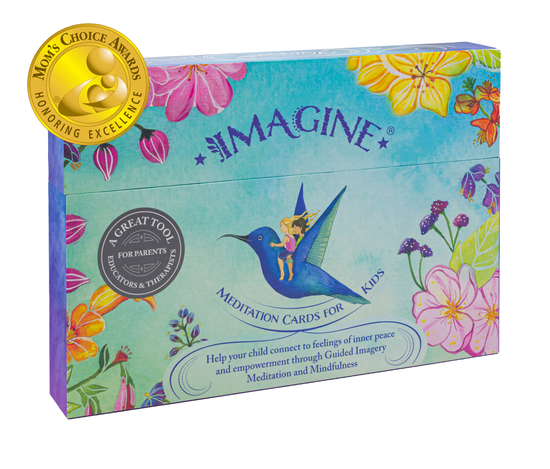
The award-winning Imagine Meditation Cards for Kids offers a fun and relaxing way for kids to practice meditation, and connect to feelings of inner peace and empowerment. With Imagine Meditation Cards for Kids children can enjoy their wonderful imagination, which knows no limits and is always available for them.
Includes 26 oversize cards with content-rich scripts and vibrant illustrations of Guided Imagery meditations for kids, a Mindfulness breathing exercise to practice before any meditation, and 2 DIY cards for kids to create their own meditations.
The Kit
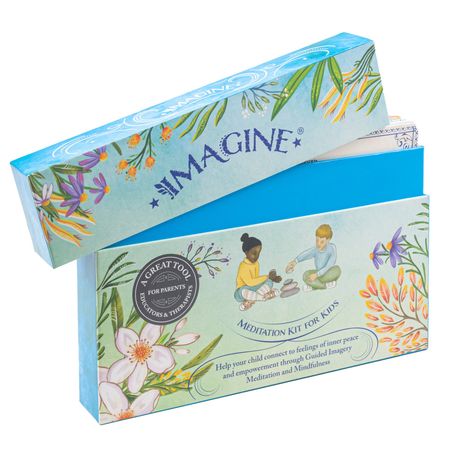
Imagine Meditation Kit for Kids offers kids of all ages a fun and engaging intro to Guided Imagery meditation, so they can learn to unwind and practice self-care on a regular basis.
The kit includes 18 oversize cards with content-rich scripts and vibrant illustrations of Guided Imagery meditations for kids, 6 Affirmation Cards, a Mindfulness breathing exercise to practice before any meditation and an easy-to-use "navigation tool" to assist you selecting the right meditation depending on the feeling or the challenge.
Benefits
Practicing meditation on a regular basis can greatly contribute to children’s sense of security and self-esteem, to enhance their ability to concentrate, cope with stress and relax, and even help them realize their strengths and skills. In a world of overwhelming technology, this is increasingly needed.
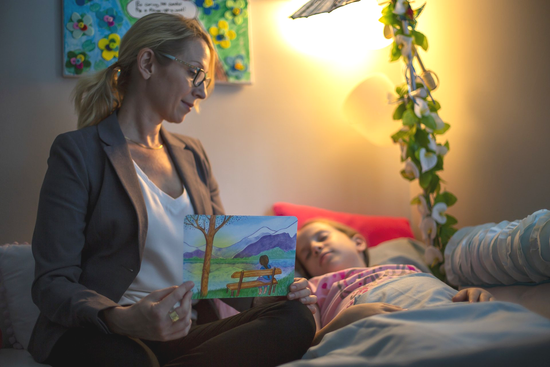
Our Story
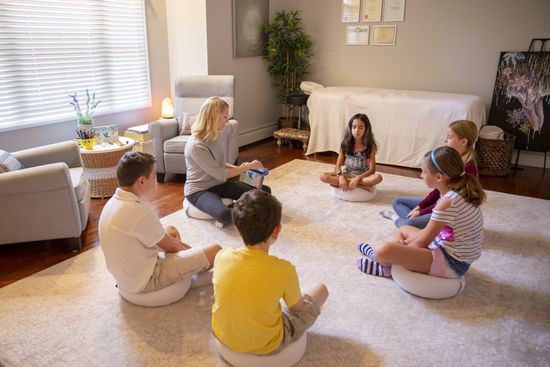
The Imagine Blog
